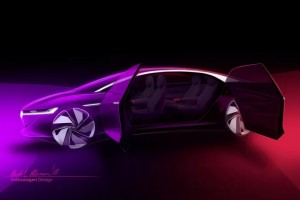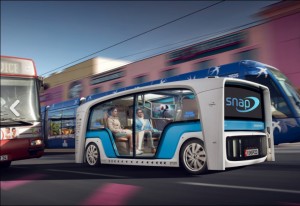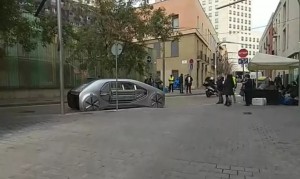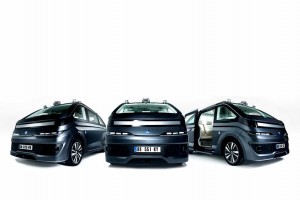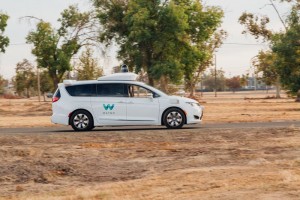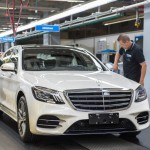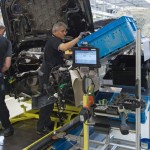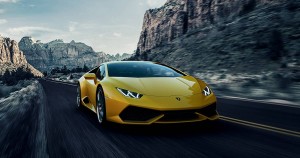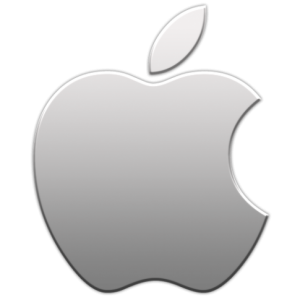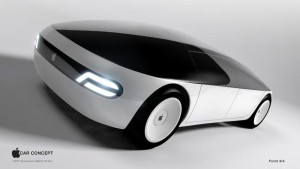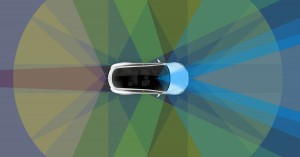Tag Archives: self-driving
Jaguar Land Rover Is Developing An All-Terrain Self-Driving Tech
Jaguar Land Rover is now developing a self-driving technology that can handle any type of terrain and weather conditions. The system will be able to identify various surface conditions and adjust the vehicle’s settings without any intervention from the driver.
The company, which is known for its off-road SUVs, first announced this system two years ago. But last week, Jaguar Land Rover revealed that it partnered with various groups, including the University of Birmingham to form the group known as CORTEX.
For the system to work, various cameras, ultrasonic, radar and LiDAR units will be used. These sensors would tell the car about the conditions of the road it is driving on. They will scan the surroundings constantly, up to 16 feet ahead at the most. But the sensors won’t only detect road situations. It would also be able to determine weather conditions—dirt, rain, ice, snow, and fog.
The data will then be analyzed and artificial intelligence will predict the potential impacts and effects of the surrounding conditions on the vehicle. Thus, the vehicle will automatically adjust its speed, steering, and even suspension.
The sensors would also be able to measure the space above and on the sides of the vehicle, a feature that would be helpful in warning the vehicle if there is insufficient clearance to maneuver. This is the same technology used in parking assistance systems.
Another type of technology that Jaguar Land Rover is developing is a kind of “platoon” system, wherein a fleet or convoy of vehicles would be able to communicate in such a way that the first vehicle on the line would send a message if it encounters a ditch or a slippery boulder.
The company has yet to announce when this technology will become available. What Jaguar Land Rover is making clear is the fact that it does not intend to take away the fun in off-road driving. The driver can take control of the vehicle anytime he/she wants. This technology is merely an aid that could guide the driver on the conditions ahead.
4 Self-Driving Cars We Expect To See At The Geneva Auto Show
Whether they’re merely concepts for now or in planned production, the Geneva Auto Show will be home to some of the most fantastic innovations of modern time—self-driving cars.
Here is a list of the top 4 self-driving cars we are anticipating at the show:
1. Volkswagen I.D. Vizzion
The I.D. Vizzion is fourth on Volkswagen’s futuristic I.D lineup of concepts. The Vizzion is a long, low sedan with no steering wheel or pedals. Much like the other I.D. concepts—the Buzz bus, the Crozz crossover, and the original I.D.—the Vizzion will be quick and powerful. It will pack a 111kWh battery car that can go 413 miles on a single charge. It will have dual motors with an output of 302 horsepower and a top speed of 112mph.
2. Rinspeed Snap
The Snap is Rinspeed’s latest concept vehicle that first debuted at the 2018 Consumer Electronics Show. As promised, the Snap is more than just a self-driving car, but it’s a “mobility ecosystem” that is pieced together. The Snap has a skateboard for the mechanicals and technology components and a pod where the riders sit. The idea is for the skateboard piece to be able to retire without necessarily diminishing the whole function of the vehicle. The pod will be able to survive even without the skateboard.
3. Renault Self-Driving Concept Car
Still unnamed at this point, the latest self-driving concept car from Renault was spotted being filmed in Barcelona ahead of its debut at the Geneva Auto Show. The pod-like vehicle is a testament to Renault’s “vision for shared urban mobility.” It is also designed for ride-hailing services like Uber.
4. Icona Nucleus
Italian design house Icona will attend the Geneva Auto Show for the first time with its self-driving car concept called the Nucleus. Icona calls it “the ultimate self-driving living room” because it focuses more on the cabin and how to make the interior functional.
Navya Unveils Its Self-Driving Car
France-based tech firm Navya just revealed its self-driving car. What makes the vehicle unique is that it ditches the driver’s seat, steering and pedals. It features full autonomy on the road.
Lately, we have been witnessing a gradual shift in the main targets of automakers. Many of them are now transitioning to the production of electric cars, thanks to the rapid advancement of technology and the cheaper means to acquire batteries with better capacity and longer electric range. The developments in computers and sensors have also paved the way for companies to enter into the race to produce self-driving cars. Navya has been taking advantage of the new landscape by not only producing their own EVs but they have even tapped into the self-driving car race.
It should be noted though that the company is not a new player in the industry. In 2015, the French firm has already showcased its autonomous vehicle called the Autonom Shuttle. So far, it has successfully demonstrated its self-driving features in real-life traffic conditions and it sold 50 of its units in different countries. Basically, the product provides mobility solutions to commuters.
From the lessons it learned along the way, they were able to make the Autonom Cab. As its name implies, it is a cab capable of autonomous driving.
Unlike the Autonom Shuttle that can only run at an average joggers pace, the Autonom Cab can reach speeds up to 55 mph. It will be worth 250,000 euros and it is targeted to enter the market by 2018 after its successful public testing.
The self-driving car aims to make its public testing at the Consumer Electronics Show (CES) in January 2018. The planned areas for its initial on-the-road demo will be in France and U.S.
Unlike the traditional cars of today, the Navya self-driving car will not have a steering wheel of pedals. It is just a proof of how confident they are in their autonomous tech. However, for the meantime, the testings will be overseen by a Navya employee with a joystick that can take control of the vehicle when needed.
A Ride Inside the Waymo Self-Driving Car
Waymo has gone a long way from a small project under Google focused on the development of self-driving cars to a company of its own, which is now under Alphabet, Inc. Recently, Waymo’s tech for self-driving car was integrated on a Chrysler Pacifica and it was put to test.
Andrew Hawkins of The Verge, got the chance to become a passenger of the minivan during the test. He described it as “smooth, yet totally unremarkable ride” because it had no driver and other passengers on-board. However, he stated that he felt completely safe in it.
Hawkins claimed that he already took similar rides before inside other self-driving cars. The only difference with the Waymo-equipped Pacifica was that there was no safety driver. Everything was handled by the car’s AI, which showed the true meaning of autonomy.
The self-driving Pacifica only ran at low speeds, but it was more than a slow crawl. It was able to move itself around cyclists, pedestrians and someone standing beside a stalled Hyundai. It should be noted that the people in the scene were merely actors, but everything was made to emulate real-life traffic conditions. Another demo also showed the SUV dodging moving autos along the way.
At present, Waymo has covered 3.5 million miles in its testing. The company was tight-lipped about the nature of the tests at first. It wasn’t until Monday when it opened its testing facilities and vehicles to the press to show them how far they have gone. The presentations demonstrated how Waymo could handle basic and complex tasks involved in driving better than humans.
John Krafcik, the CEO of Waymo, revealed that they are targeting to reach the “level four mode” wherein the cars possessing their tech could already locate and approach passengers.
So far, we learned that Waymo has successfully integrated their tech with the Pacifica and Lexus SUVs.
A Closer Look At The 2019 Audi A8
The unveiled 2019 Audi A8, which will go on sale in 2018, may be a little conservative when it comes to its exteriors looks, but the technology is super advanced. This fourth-generation A8 is the oldest among its peers, but there is still significant interest on what Audi can still possibly do with this particular line.
A redesigned version of the flagship sedan was launched on Tuesday during a special event in Barcelona, Spain. It’s nothing special from the outside, but Audi fitted it with a “Level 3” self-driving capability. According to the Society of Automotive Engineers (SAE), a Level 3 self-driving technology is when a car can take complete control in specific situations, with the driver being able to take over after a short warning period.
Level 3 Artificial Intelligence
The major technological feature of the 2019 Audi A8 is the AI-based software that it comes fitted with. The system not only controls the self-driving capability of the vehicle, but also acts as an “electronic concierge” of some sorts. This is the first software announced to have a Level 3 capability since the most advanced software the public has seen so far is a Level 2 self-driving capability.
A Level 2 software requires the driver to monitor the situation and to take over in an instance in case of an emergency.
Included in the A8, the Level 3 system can take over during “some” parking situations and self-drive during traffic jams on uninterrupted roads like highways. The system can provide a speed up to 37mph, allowing ample time for the driver to take over if something goes wrong. Under these situations, the driver can use the phone or read a book while the system has taken over.
The possibility of sleeping in a car under a self-driving situation is still not possible, though, unless a Level 4 is realized. Experts are predicting that a Level 4 car may be available by next decade while a Level 5, where there is no driver needed, would have to take some more time.
New Mercedes-Benz S-Class Shows Self-Driving Feature
The production of the Mercedes-Benz S-Class commenced on July 3 at the Sindelfingen plant of the three-pointed star brand. The first S560 model produced by the facility showed its self-driving capability during the event.
The new Mercedes-Benz S-Class is a facelifted version of its range’s sixth-generation platform introduced in 2014. Among the notable visual upgrades of the car include the new bumpers, lighting system and radiator grille. At present, the vehicle is available in different trims including the S350d 4MATIC, S400 4MATIC, S560 4MATIC and the range-topping AMG S63 4MATIC. The non-AMG models come in long-wheelbase versions and the S560 is sold with a Mercedes-Maybach variant. Daimler confirmed that a plug-in hybrid version of the S-Class will also come out.
The self-driving feature of the S-Class was demonstrated by a S560 model. An obsidian black metallic-finish model aided by built-in cameras, radar and ultrasonic sensors drove itself for 1.5 kilometers from the assembly line to the loading area of the plant. A software governing the Intelligent Drive, Active Distance Assist DISTRONIC and Active Steer Assist made the feat possible.
In the video below, Markus Schafer, Member of the Divisional Board Management of Mercedes-Benz Cars Production and Supply Chain Management, can be seen sitting in the front passenger area of the S560. No one sat on the driver’s seat of the car as it accelerated and steered itself autonomously.
Click play in the video below to watch the demo of the self-driving Mercedes-Benz S560:
Mercedes started the sale of the S-Class in May. The price of the car starts at 88,446.75 euros in Germany (inclusive of 19% VAT). The high-performance Mercedes-AMG S63 4MATIC comes with a 160,293 euros price tag (including a 19% VAT).
The S350d 4MATIC is equipped with a 210 hp diesel-fed 3.0-liter inline-six engine. The S400 4MATIC is offered in petrol 3.0-liter inline-six engines configured to produce 250 hp and 340 hp. The S560 is equipped with a 4.0-liter V8 in 345 hp and 469 hp powertrain. The AMG variant is packing a 4.0-liter V8 in 450 hp and 612 hp trims.
Will Lamborghini Sports Cars Go AI?
The automotive landscape is slowly transitioning to a different level. Most automakers are now pouring in a lot of their resources in their research and development so that no one will be left behind in terms of electrification in cars and during the shift to autonomous driving.
Lamborghini is one of the world’s most recognizable producers of luxury super sports cars. The brand had been identified with power, style and the performance of its cars. With the advent of new car technologies, is the automaker planning on adapting self-driving systems?
Murray Newlands recently sat down with Maurizio Reggiani, the Director of Research and Development of Lamborghini, to get his take on the matter.
Based on the article that was posted in Forbes, Lamborghini appears to be treading carefully on the subject. The automaker seems to be looking into the technology but it does not want to integrate it in their sports cars in an invasive manner. After all, people buy Lamborghinis because they want to experience driving it.
Reggiani wants their artificial intelligence to be useful in adaptive cruise control during a drive downtown or in a traffic jam. He also expects it to improve the skill and activity of driving their cars. From his statement, he expects the AI to mainly provide predictive instructions to the driver in crucial moments like when cornering or when the vehicle steers out of control due to overspin.
The Lamborghini exec said the AI systems will probably be used heavily on the Urus since it is a daily-use car. It would be a different story in their sports cars though because they want their drivers to have fun and get the best manual driving experience from them.
Another issue about putting a lot of AI systems in the sports car is that it will compromise its weight. Reggiani added that the same is true with putting electric batteries in their autos. The sound of the Lamborghini would be traded off with the electric battery too.
The interviewer even went as far as to ask whether the company will be developing flying transportation mobility devices like what Toyota announced. Reggiani answered that they will never go in that direction.
Reggiani concluded the interview by reminding that people don’t buy Lamborghini because they need it. They purchase it as an award for themselves or to gratify themselves. It is not an ordinary car for day-to-day use.
Development of Apple Self-Driving Car Hinted
There have been tidbits of information pointing to the development of an Apple self-driving car. Details about the matter have always been closely guarded and the Cupertino-based tech giant firm has been mum about it. However, a new clue has been uncovered that suggests the autonomous vehicle program of the company is still alive.
In a document published by Apple enumerating its Supplier List for February 2017, it included Robert Bosch GmbH in it with office address at Tuebinger Strasse 123, Reutlingen, Germany. While the company is known for its production of sensors for electronic devices, power tools, security systems and home appliances, it should be noted that it is also responsible in supplying automotive parts.
According to a source, among the products produced by Bosch’s automotive division are vehicle sensors, electronic controls, power braking systems and steering. The collaboration of the two is in compliance to the guidelines of the National Highway Traffic Safety Administration in autonomous vehicles. A letter of Apple’s director of product integrity, Steve Kenner, to the NHTSA was uncovered too wherein he expressed the company’s interest in making automated systems in many areas, including the transport sector.
Other Clues to the Apple Self-Driving Car Project
Apple continues to play coy in the matter. But there have been many clues dropped by its company’s executives as well as their actions as of late pertaining to their involvement in an automotive program.
Apple CEO Tim Cook hinted before that they wanted to expand beyond the integration of their smartphones into vehicle infotainment systems. In addition, there have been a series of high-profile hirings that further fuel speculations about the subject.
In 2015, Apple hired former Mercedes-Benz Research & Development head Johann Jungwirth. Then last year, the firm took Sinisa Durekovic under its wing. He is known for his work in developing satellite navigation systems used by luxury car brands like Audi, BMW and Mercedes-Benz.
Top 15 Rumors About the Apple iCar
There have been rumors since early last year that Apple is developing its own car, which is either an electric vehicle or a self-driving unit. Although the Cupertino-based multinational company remains secretive about it, there have been hints from inside sources and sightings confirming that the giant tech firm is indeed working on its own vehicle. The mass media currently refers to the auto as the Apple iCar.
Here are the top 15 rumors about the iCar that Macworld gathered:
1. Codename
According to Wall Street Journal, the iCar project is codenamed as “Titan.” It also claimed that several hundred employees are working on it.
2. McLaren Negotiations
Financial Times stated that Apple is negotiating to buy McLaren. It is not clear though if Apple is only considering it as an investment, but it is most likely that Apple is looking to utilize the supercar technology available in McLaren for its iCar.
3. Issues
Apple is reconsidering its strategy in development of self-driving cars. It was reported that the company laid off a number of its staff working on the project.
4. Marketing Strategy
The tech firm is planning on an aggressive marketing strategy for its iCar. It is targeting sales of half a million units annually.
5. Battery
The iCar battery will be sourced from a major Sourth Korean battery developer according to Neil Cybart, founder of analyst firm Above Avalon. The source said the anonymous Korean company just signed a Non-Disclosure Agreement with Apple.
6. Unveiling
Appleinsider said the completion of the iCar is tentatively set in 2021 due to major setbacks.
7. Development Cost
Apple spent $10 billion in research and development as of late. Previously, the company only allotted $3 billion for that. The sudden bubble in R&D costs indicates that it is working on something more than smartphones, tablets or computing devices.
8. Commitment
Tim Cook appears to be committed to it. Despite not confirming the project, he left hints in his interviews that they are into something bigger outside the products they have now.
Wall Street Journal revealed too that Bob Mansfield is overseeing the electric vehicle division of the company. Mansfield is a former senior vice president of Technologies at Apple. He reportedly extended his tenure from a planned retirement from the company in 2012 to lead the special project.
9. Noise in Apple Facility
Residents in Sunnyvale, California said that engine noises could heard in an Apple campus at 11PM based on Appleinsider.
10. Domain Names
MacRumors found out that Apple bought domain names related to cars in December 2015. However, it is also possible that the domains will be used for the in-car system of Apple called CarPlay.
11. Apple Covering Its Tracks
Reports surfaced that the car manufacturer Faraday Future might be a front of Apple for the development of its iCar. This is to divert the attention of the public from the iCar and keep the project away from the prying eyes of the media.
12. Digital License Plates
Among the cool technologies equipped in the iCar will be digital license plates.
13. Big Car and Tech Firms Sense a New Player in the EV Scene
Elon Musk revealed Apple has been offering Tesla engineers to jumpship with $250,000 signing bonus and 60 percent increase in salary. Korea Times claimed Apple is luring Samsung tech experts into their yard too.
14. Apple is Testing Cars Rigged with Sensors
Cars registered with Apple were seen in the roads fitted with a lot of sensors. The tech firm ruled out the development of autonomous car though by saying that the cars are only being used to test their mapping technology.
15. Apple’s Acquisition of Johann Jungwirth
The best evidence pointing to the possible development of the iCar is the hiring of Johann Jungwirth in Apple. Jungwirth is the former head of R&D at Mercedes-Benz. He is rumored to be spearheading the development of the iCar.
Tesla Will Equip All Its Cars With Self-Driving Tech
Electric vehicle maker Tesla announced on October 19 that all the cars it will produce—including Model 3—will be equipped with technology that will allow them to go on auto-pilot.
Last year, the company co-founded by Elon Musk introduced the Autopilot system. Although it is far from offering fully-autonomous driving to its cars, the technology already has the elements that will pave way for that goal.
So far, the system allows auto-braking. It will also offer several features that will heighten the safety levels of the car, which is far more than the capability of a human driver.
To achieve such, Tesla equipped its cars with twelve updated ultrasonic sensors. The sensors double the capability of the old system in detecting hard and soft objects within the vicinity of the vehicle. The tech increases the awareness of the driver on the road too especially during heavy rain, dust, fog and in detecting incoming cars using its forward-oriented radar with enhanced processing.
Tesla said the new onboard computer in its cars provides 40 more computing capacity than the previous generation. The upgrade gives Tesla cars a new neural net enhancing their vision, sonar and radar. With that, every direction is seen by system simultaneously, which is far more than what the human senses are capable of.
Tesla reminded that customers will not have to wait for the mentioned technology anymore. The Tesla Model S and Model X have it already. The vehicles are being sold now.
For the meantime, Tesla stated that it will have to conduct more tests with their new system. The calibration would require millions of miles in real-world driving to ensure optimum safety and convenience. As a result, some features of the Autopilot will have to be disabled for the moment like the emergency braking, collision warning, lane assist and active cruise control. Over the air updates will be released to enable the blocked features once Tesla is confident in their new system.

